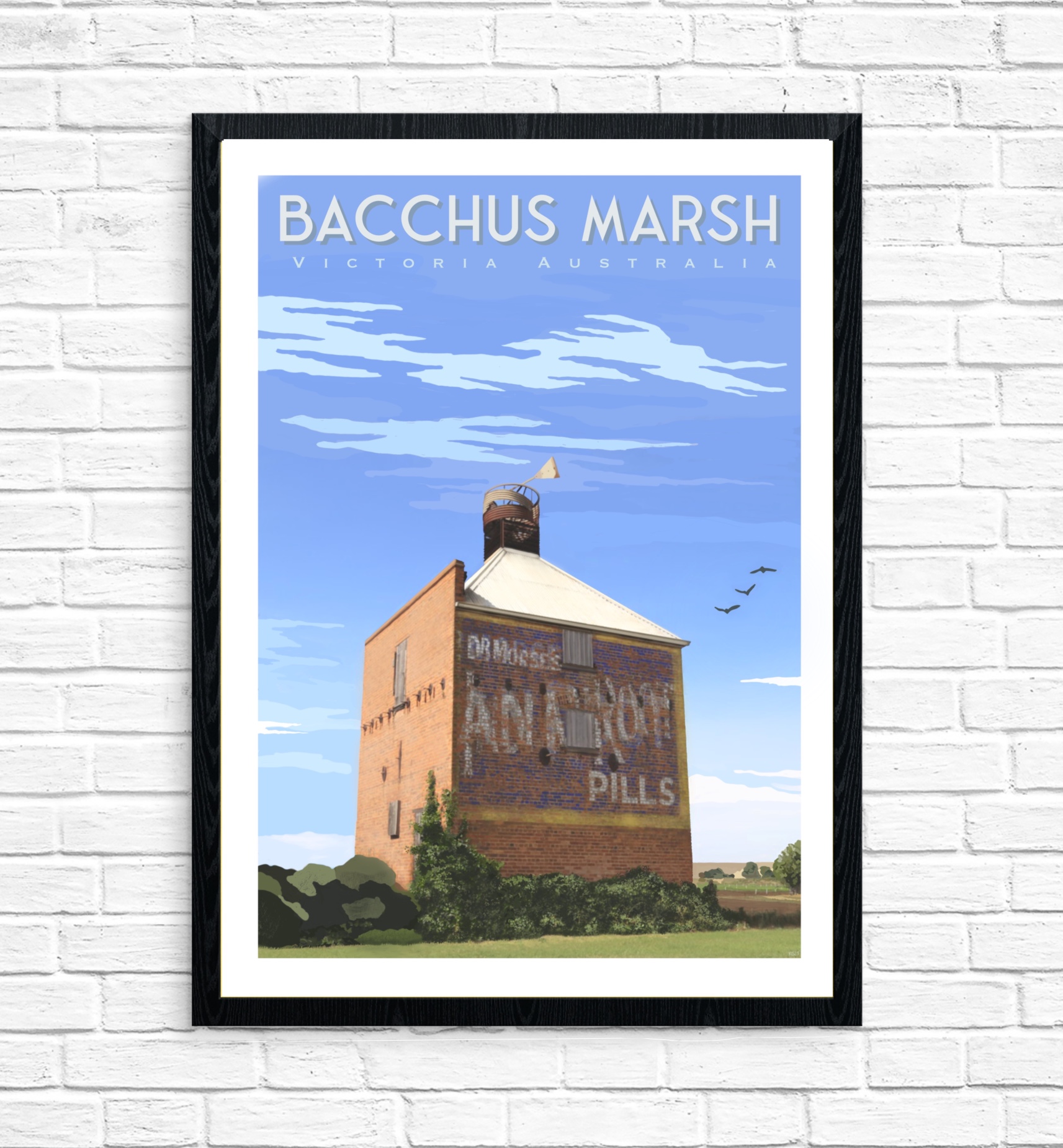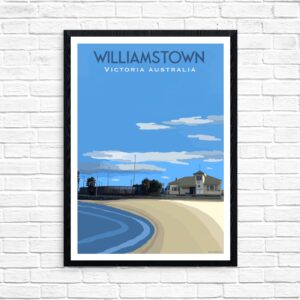Bacchus Marsh Chicory Kiln Ghost Sign
From: $22.00
Sold unframed and in AUD
Description
The Bacchus Marsh Chicory Kiln Ghost Sign artwork by Kerrie Gottliebsen celebrates the Chicory Kiln at Maddingley, south of the Werribee River at Bacchus Marsh, a large brick structure that was built in 1885 for the process of drying chicory roots which were used as a coffee additive.
One of Bacchus Marsh’s most iconic heritage sites, the kiln was used from 1885 until 1910. The old faded painted ghost sign on the southern facade of the kiln advertises ‘Dr Morse’s Indian Root Pills’. The sign was painted in the 1890s, and was large enough to be visible from the nearby railway line.
Indian Root Pills were marketed at the time as a blood cleanser that improved health. They were invented in America in the 1850s, and were made of a mixture of aloes, mandrake and pepper. The pills were meant to cure biliousness, constipation, headaches, jaundice and indigestion.
In 1885 the Pearce Brothers constructed a chicory kiln to provide a drying facility for their chicory crops which had previously been sold in a green state. This reduced both their weight and bulk for packing and transporting to Melbourne.
The kiln was constructed only about 200 metres south of the Werribee River and the chicory crop was watered by irrigation. A calico hose carried water to the crop, with each watering delivering about two inches of water. Pearce’s crop rotation involved chicory, carrots, hay and potatoes.
The Chicory Kiln at Maddingley is the largest known chicory kiln in Victoria and is the oldest remaining substantially intact example of its kind in Victoria. Bacchus Marsh is in the Victorian LGA of Moorabool.
The Bacchus Marsh Chicory Kiln Ghost Sign artwork can be purchased in A4, A3, A2, A1 and the super enormous A0.
Additional information
| Size | A0, A1, A2, A3, A4 |
|---|






